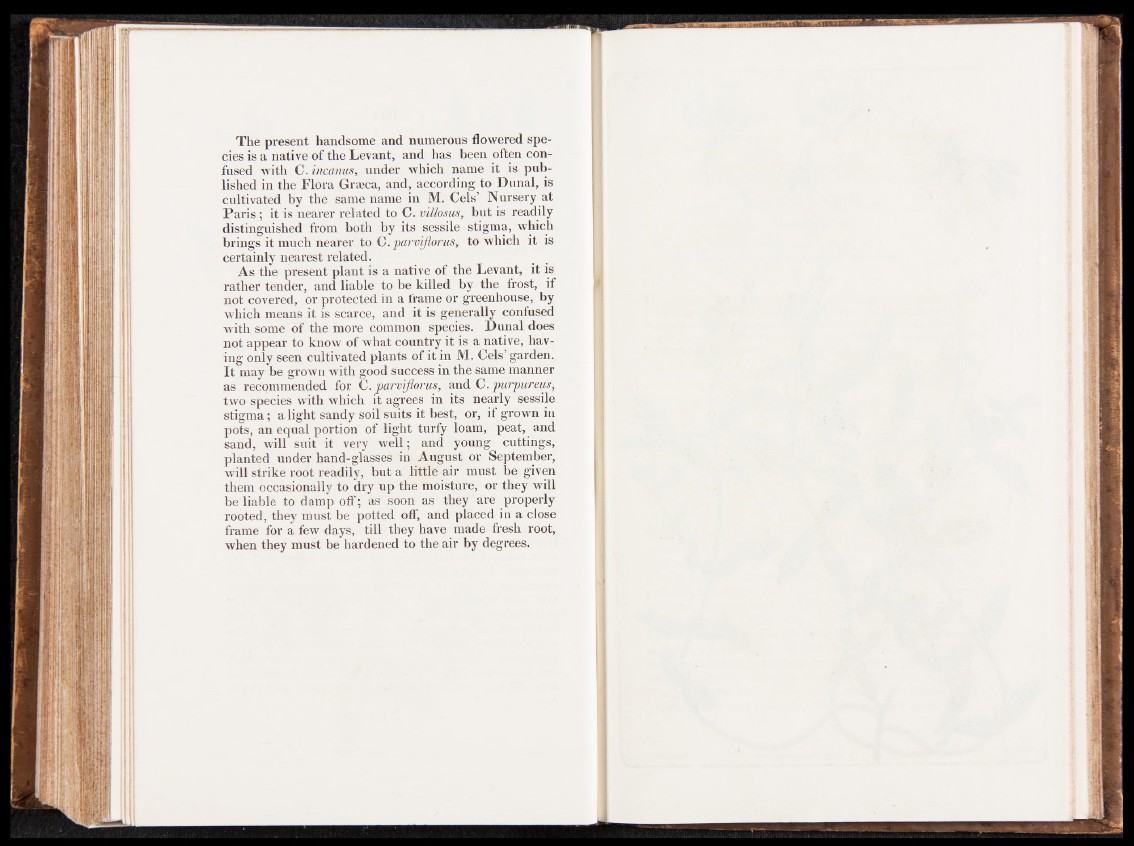
The present handsome and numerous flowered species
is a native of the Levant, and has been often confused
with C. incanus, under which name it is published
in the Flora Graeca, and, according to Dunal, is
cultivated by the same name in M. Cels’ Nursery at
Paris; it is nearer related to C. villosus, but is readily
distinguished from both by its sessile stigma, which
brings it much nearer to C. parvijlorus, to which it is
certainly nearest related.
As the present plant is a native of the Levant, it is
rather tender, and liable to be killed by the frost, if
not covered, or protected in a frame or greenhouse, by
which means it is scarce, and it is generally confused
with some of the more common species. Dunal does
not appear to know of what country it is a native, having
only seen cultivated plants of it in M. Cels’ garden.
It may be grown with good success in the same manner
as recommended for C. parvijlorus, and C. purpureus,
two species with which it agrees in its nearly sessile
stigma; a light sandy soil suits it best, or, if grown in
pots, an equal portion of light turfy loam, peat, and
sand, will suit it very well; and young cuttings,
planted under hand-glasses in August or September,
will strike root readily, but a little air must be given
them occasionally to dry up the moisture, or they will
be liable to damp off; as soon as they are properly
rooted, they must be potted off, and placed in a close
frame for a few days, till they have made fresh root,
when they must be hardened to the air by degrees.